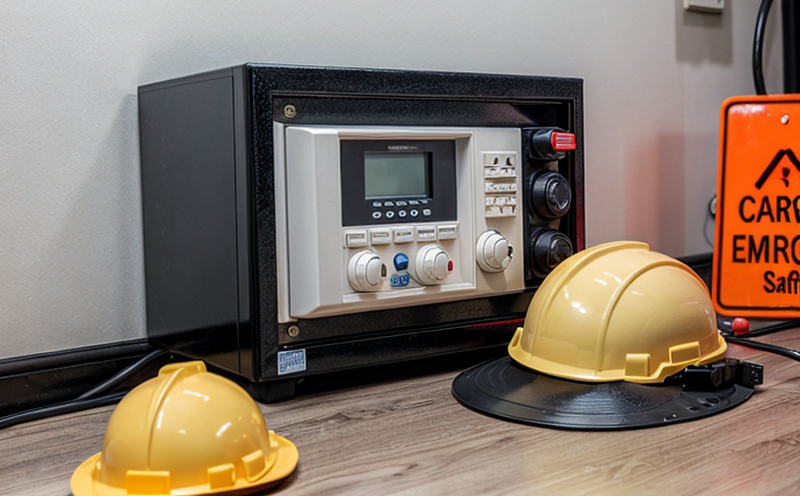FAA AC 25.1419 Ice Protection Emergency Systems Testing
The Federal Aviation Administration (FAA) Airworthiness Certification Standard AC 25.1419-1R2 governs the design and testing of ice protection systems for aircraft. This standard ensures that these critical systems are reliable under all conditions, including icing environments encountered during flight.
The primary objective of this service is to ensure compliance with FAA AC 25.1419, which mandates comprehensive testing of ice protection systems (IPS) installed on commercial transport category airplanes. The scope of the test includes verifying the effectiveness and reliability of the IPS under defined icing conditions. These tests are crucial for ensuring that aircraft can continue to operate safely in potentially dangerous icing environments.
Testing must be conducted using a combination of static and dynamic methods, which simulate real-world icing conditions. Static testing involves placing the system under controlled icing conditions without engine operation, while dynamic testing simulates actual flight conditions, including engine operation and aerodynamic loads. The goal is to demonstrate that the IPS can effectively prevent or remove ice accretion on critical surfaces such as wings, horizontal stabilizers, control surfaces, and engines.
The standard specifies detailed procedures for both static and dynamic tests. For static testing, the test specimen is exposed to a controlled environment where icing conditions are simulated using fog and cold air. The temperature and humidity levels must be precisely controlled within specified ranges. Dynamic testing involves more complex setups that include wind tunnels or flight simulation systems capable of replicating in-flight conditions.
The acceptance criteria for these tests are stringent, requiring the IPS to perform reliably under all specified icing conditions without fail. This includes demonstrating the system’s ability to detect and mitigate ice accretion on key surfaces. The test results must show that the system can prevent or remove ice accumulation within a defined time frame.
For successful compliance with FAA AC 25.1419, laboratories should have access to specialized equipment capable of replicating various types of icing conditions and environments. This includes fog generators, cold air systems, and dynamic test rigs that simulate flight conditions accurately. The testing process also requires skilled personnel who understand the nuances of each test procedure.
Ice protection is a critical aspect of aviation safety, and compliance with FAA AC 25.1419 ensures that aircraft are equipped to handle icing conditions safely. The standard applies not only to new aircraft designs but also to modifications or retrofits involving IPS installations. By adhering to these stringent testing protocols, manufacturers can ensure the reliability and safety of their systems.
Scope and Methodology
| Test Type | Description |
|---|---|
| Static Testing | Involves placing the system under controlled icing conditions without engine operation. This helps assess the IPS’s ability to function independently in static environments. |
| Dynamic Testing | Simulates actual flight conditions, including engine operation and aerodynamic loads, to evaluate the IPS’s performance in dynamic environments. |
The scope of testing includes verifying that the ice protection system can operate effectively under specified icing conditions. This encompasses both static and dynamic tests designed to simulate real-world scenarios where ice accretion could occur. The methodology involves subjecting the system to controlled environmental conditions, including temperature, humidity, and air velocity, which mimic typical icing environments encountered during flight.
During testing, the system is monitored continuously for its performance in detecting and mitigating ice accumulation on key surfaces. Various sensors and measurement devices are used to track the system’s effectiveness, ensuring that it meets all specified requirements. The results of these tests provide critical data that can be analyzed to ensure compliance with FAA AC 25.1419.
Benefits
Compliance with FAA AC 25.1419 brings numerous benefits, particularly in enhancing the safety and reliability of aircraft systems. By ensuring that ice protection systems function effectively under defined icing conditions, this standard significantly reduces the risk of accidents caused by ice accretion on critical surfaces.
- Enhanced Safety: Ensures that aircraft can continue to operate safely in potentially dangerous icing environments.
- Compliance: Meets regulatory requirements set forth by the FAA, ensuring that systems are certified for commercial use.
- Innovation: Encourages manufacturers to develop more advanced and efficient ice protection technologies.
- Reliability: Provides consistent performance data across different environmental conditions, improving confidence in system reliability.
The standard also promotes continuous improvement by requiring periodic requalification of systems. This ensures that as aircraft technology evolves, the testing methods remain relevant and effective. By adhering to these stringent standards, manufacturers can gain a competitive edge in the aviation industry, ensuring that their products meet the highest safety and performance benchmarks.
Use Cases and Application Examples
| Application | Description |
|---|---|
| New Aircraft Design | Ensures that newly designed aircraft are equipped with reliable ice protection systems from the outset. |
| Retrofit Installations | Verifies that existing aircraft can be modified to include advanced ice protection systems without compromising safety or performance. |
| Airline Maintenance Programs | Supports periodic requalification of installed ice protection systems, ensuring ongoing compliance with regulatory requirements. |
The FAA AC 25.1419 Ice Protection Emergency Systems Testing has a wide range of applications across the aviation industry. For new aircraft design, this testing ensures that ice protection systems are integrated into the overall design, providing reliable performance from the start. In retrofit installations, it guarantees that existing aircraft can be modified to include advanced ice protection technologies without compromising safety or performance.
Airlines also benefit from this service through their maintenance programs. Periodic requalification of installed ice protection systems ensures ongoing compliance with regulatory requirements, enhancing operational safety and reliability. This testing process is critical for maintaining the integrity of these systems over time, ensuring that they continue to perform effectively in challenging environmental conditions.





